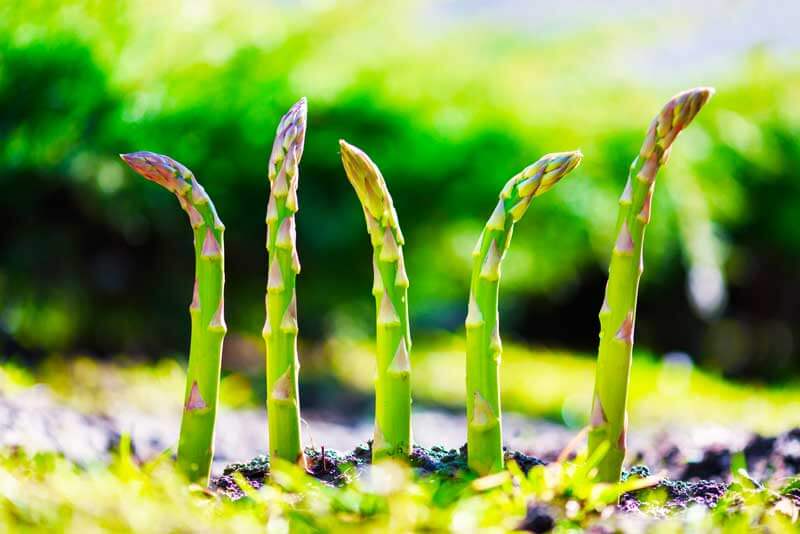How to grow asparagus –

Because asparagus is a perennial crop and will grow in the same space for many years to come, selecting a good planting location is vital to its long-term success. First and foremost, asparagus needs to be planted with the sun in mind. Select an area receiving at least at least 8 hours of full sunlight each day. Although asparagus will tolerate partial shade, it will thrive in full sun.
In addition to adequate sunlight, overall soil quality needs to be considered before planting as well. Asparagus grows best in fertile, loose and well-drained soil.
Remember the crop will be growing in the same space for up to 20 years or more. With that in mind, it is extremely important to fill the soil with nutrients from the start. The best way to do that is by working in large amounts of compost before planting.
Asparagus can be grown directly from seed, or from crowns. When planting a backyard crop growing from crowns is the far easier, and usually more successful option. It also leads to a much earlier harvest.
Planting Asparagus Crowns
Planting asparagus is best done using what is known as the trench method. To plant, begin by digging a trench 6” deep and 8” wide in the soil.
Next place crowns at the bottom of the trench, water in and cover with about 2” of topsoil.
Allow about 18” between crowns and 12” between rows. As the crown begins to grow through the soil, keep adding a few inches of soil, filling the trench slowly. Eventually, the trench will be filled in completely over the course of a few weeks.
This trench and fill process allows the asparagus to develop deep roots in the soil. All of which leads to years of excellent crop harvests.
First Year Growth & Maintenance
Here is the hardest part of planting and growing asparagus – you shouldn’t harvest spears until the second year. Unfortunately, although the crowns will send up some delicate spears, it is best to let them grow in year one.
In year two you can harvest some spears early. Then, again allow the crop to grow to full maturity. After year two you can harvest at will, but always allowing the plants to grow after until fall.
Maintaining the Crop – Mulching & Fertilizing Asparagus
The biggest key to growing asparagus successfully is keeping beds weed free. Weeds and grass compete for valuable nutrients. Beds that fill with weeds will result in smaller, less productive harvests.
The best way to help keep weeds at bay is with a thick layer of mulch. Not only will it help suppress and eliminate weeds and weed seeds, it also keeps valuable moisture in the soil for plants.
Fertilizing
Because they are a perennial crop, asparagus plants benefit greatly from added nutrients over time. As with any perennial, they can slowly drain the soil of nutrients as the years roll by.
Fertilizing plants is best done in late summer or early fall, and once again, compost is all you will need. Simply pull back the mulch and spread a few inches of compost around the base of each plant.
These nutrients will work slowly into the soil to help re-energize the soil and crowns. By doing this in late summer or early fall it provides a valuable source of fresh nutrients for the following spring harvest.
Once established, your asparagus beds will provide you with years of fresh-tasting crops each spring!
Delivery in the Saint John area
*cost depending on location.
